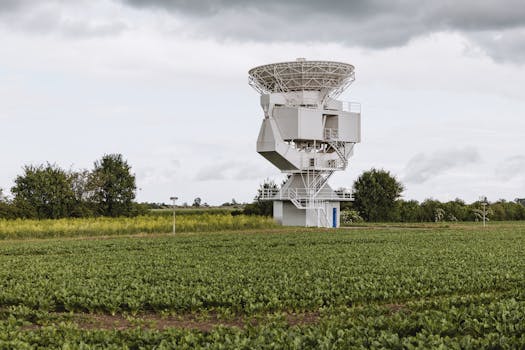GEO Satellites: Understanding the Technology and Applications of Geostationary Orbit Satellites

GEO Satellites: Understanding the Technology and Applications of Geostationary Orbit Satellites
GEO satellites, or geostationary orbit satellites, are a type of satellite that orbits the Earth at an altitude of approximately 36,000 kilometers, which is about 1/10th of the distance between the Earth and the Moon. At this altitude, the satellite’s orbital period matches the Earth’s rotational period, allowing it to remain stationary relative to a fixed point on the Earth’s surface. This unique characteristic makes GEO satellites ideal for a wide range of applications, including telecommunications, navigation, and weather forecasting.
GEO satellites have been in use for over five decades, with the first geostationary satellite, Syncom 2, launched in 1963. Since then, the technology has evolved significantly, with modern GEO satellites offering higher bandwidth, improved signal quality, and increased payload capacity. Today, there are over 500 GEO satellites in orbit, providing services to billions of people around the world.
Applications of GEO Satellites
GEO satellites have a wide range of applications, including telecommunications, navigation, weather forecasting, and Earth observation. In telecommunications, GEO satellites are used to provide broadband internet, television broadcasting, and mobile connectivity to remote and underserved areas. They are also used for navigation, providing location information and timing signals for GPS and other satellite navigation systems.
In weather forecasting, GEO satellites are used to monitor weather patterns, track storms, and predict weather conditions. They are also used for Earth observation, providing data on climate change, natural disasters, and environmental monitoring. Additionally, GEO satellites are used for military communications, surveillance, and reconnaissance, as well as for scientific research and experimentation.
Advantages and Limitations of GEO Satellites
GEO satellites have several advantages, including their high bandwidth, wide coverage area, and reliability. They are also relatively low maintenance, as they can operate for up to 15 years or more without the need for refueling or repairs. However, GEO satellites also have some limitations, including their high launch costs, limited maneuverability, and vulnerability to space debris and solar flares.
Another limitation of GEO satellites is their latency, which can range from 240 to 280 milliseconds, depending on the location of the satellite and the user. This latency can be a problem for applications that require real-time communication, such as video conferencing and online gaming. However, this limitation can be mitigated by using newer technologies, such as low-Earth orbit (LEO) satellites, which have lower latency and higher throughput.
Future Developments in GEO Satellites
Despite the limitations of GEO satellites, they continue to play a vital role in modern telecommunications, navigation, and weather forecasting. To address the limitations of GEO satellites, researchers and manufacturers are developing new technologies, such as advanced propulsion systems, more efficient power sources, and improved antenna designs. These advancements are expected to increase the capacity, reliability, and lifespan of GEO satellites, while reducing their size, weight, and cost.
In addition to these technological advancements, there are also new applications and services being developed for GEO satellites, such as satellite-based internet of things (IoT) services, which will enable the connection of billions of devices to the internet. Other applications include satellite-based 5G services, which will provide high-speed, low-latency connectivity for mobile devices, and satellite-based Earth observation services, which will provide high-resolution images and data on climate change, natural disasters, and environmental monitoring.



